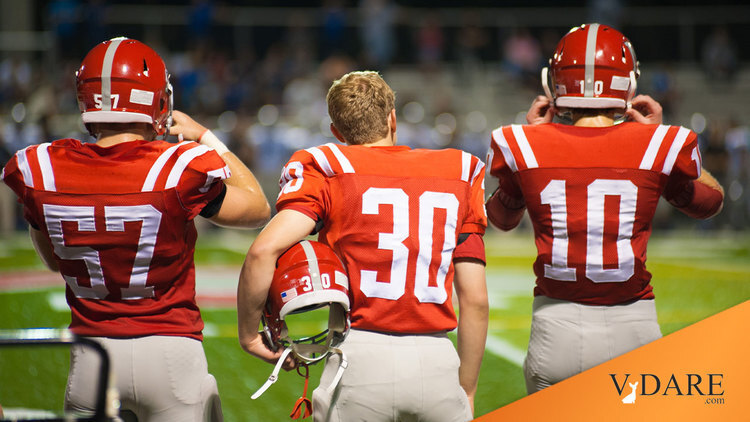
College Football Players Are Finally Getting Publicly Paid
By Steve Sailer
10/21/2023
Earlier: Colleges Redistribute Earnings Of Black Male Athletes To White Female Athletes
America has a lot of weird sports institutions, compared to soccer in the rest of the world. The most notorious are college football and basketball, which basically don’t exist outside of North America. (Even Canada’s college football is low-key. 27 Canadian colleges play football, but only five have stadiums holding over 10,000 people.)
American college sports were officially amateur until very recently.
From The New York Times:
How Rich Donors and Loose Rules Are Transforming College Sports
A shift that allows booster groups to employ student-athletes has upended the economics of college football and other sports while giving many donors a tax break.
By David A. Fahrenthold and Billy Witz
Oct. 21, 2023, 5:01 a.m. ET
… The upheaval has its roots in a Supreme Court decision and a handful of state laws that made it illegal in 2021 for the N.C.A.A. to continue its longstanding prohibition on athletes making money from endorsements. In dropping the ban, the N.C.A.A. assumed the result would be a way for star athletes to get endorsement deals, a cut of jersey sales or money for acting as social media influencers — also known as “name, image, likeness” arrangements, or N.I.L.
Instead, a very different model sprang up in parallel, one in which the collectives have effectively hijacked the N.I.L. system to circumvent the N.C.A.A.’s still-in-force ban on paying players to play by finding ways to get more money to more athletes.
The collective system is “a pay-for-play scheme disguised as N.I.L.,” Tony Petitti, the commissioner of the Big Ten Conference, said at a Senate hearing this week. “We are concerned that management of college athletics is shifting away from the universities to collectives.”
The New York Times identified more than 120 collectives, including at least one for every school in each of the five major college football conferences. The average starter at a big-time football program now takes in about $103,000 a year, according to Opendorse, a company that processes payments to the players for the collectives. This year, Opendorse said it expects to process over $100 million in payments for athletes, with about 80 percent coming through collectives.
These “collectives” are basically booster clubs, with car dealers of course featuring prominently. (What’s the deal with car dealers and college football?)
College football is pretty chaotic, with venerable conferences collapsing — e.g., USC and UCLA dropped out of the Pacific Coast conference to join the Great Lakes–centered Big Ten and then Stanford and Cal joined the Atlantic Coast conference. Players are now allowed to transfer to other colleges during the off-season fairly willy-nilly. For example, Rice’s quarterback, J.T. Daniels, is in his 6th year of college and previously played at West Virginia, Georgia, and USC.
Interestingly, though, college football appears to be gaining in popularity with TV viewers, with viewership up 12% this year and 28% over the last half decade, according to Evan Strauss.
